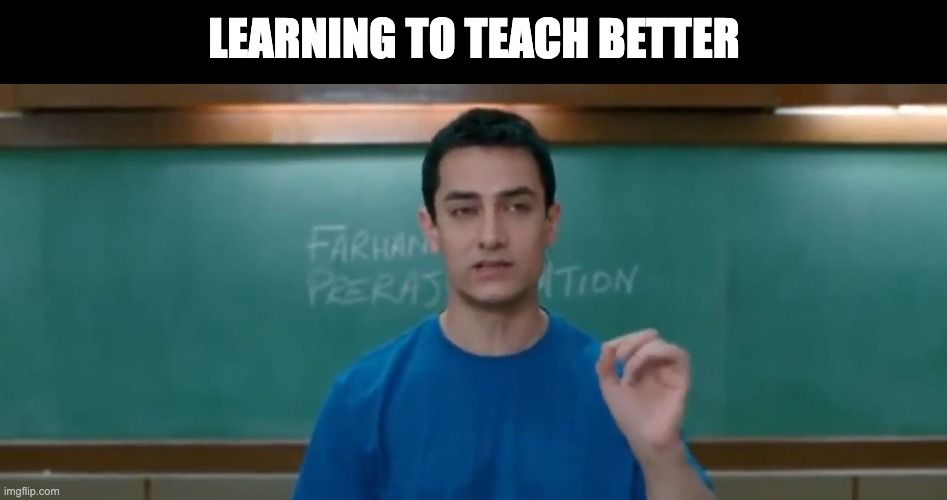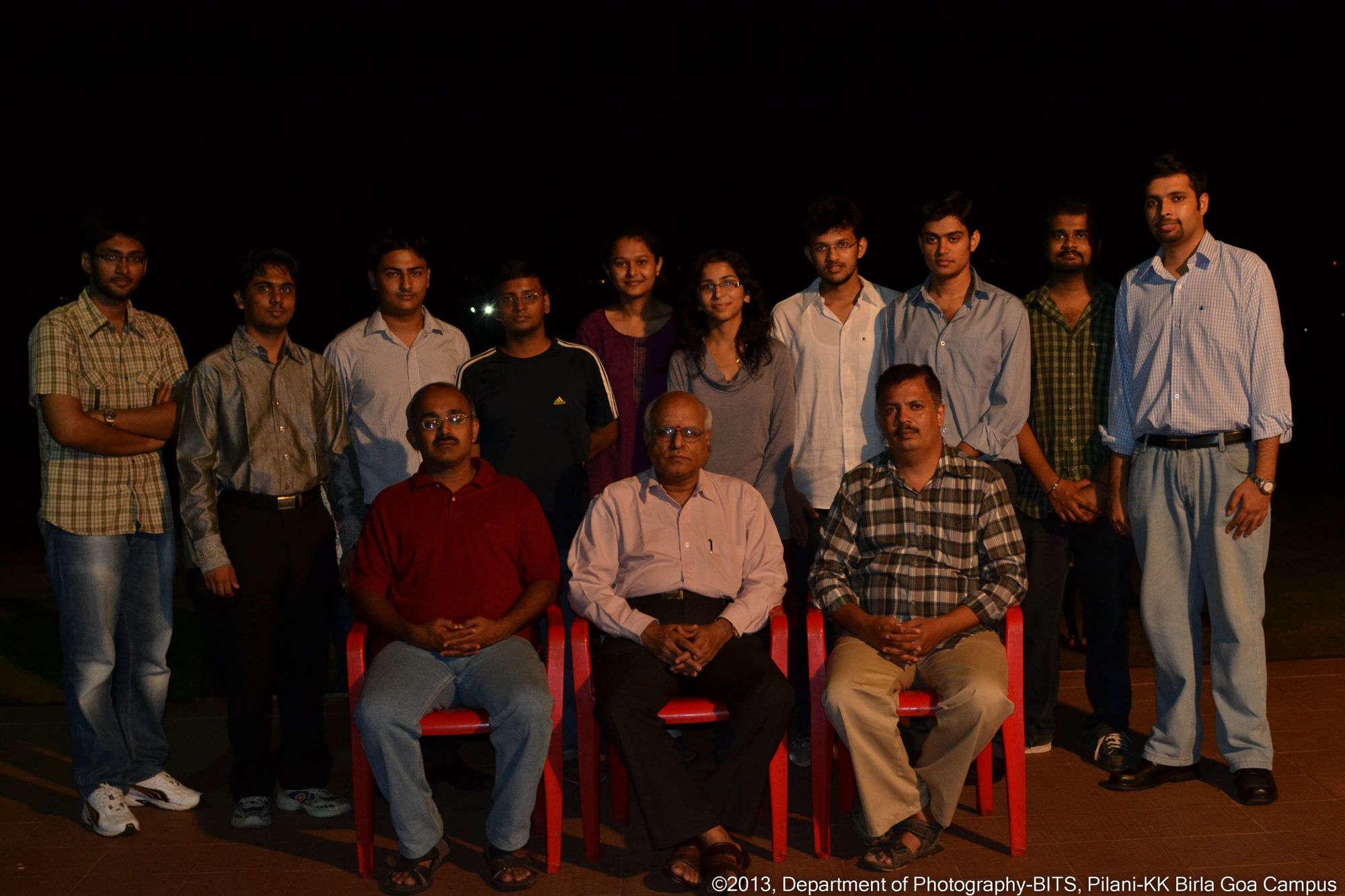Learning to teach better!
Sharing my learnings from a course about teaching.

As part of my PhD goals, I need to figure out whether I want to go to academia or industry after completing my PhD. I do have 5 years of industry experience, so I have some idea about it. But on the other hand, I don’t have enough experience for teaching. During my undergraduate program, I was a TA for a couple of courses and the faculties of those courses assigned me one lecture for each of those courses. Other than that, I was also a teacher in CTE (Center for Technical Education) a student lead initiative started by neighbors Chintak and Deepak. I was leading a course in that.

I wasn’t a good teacher back then. I remember that one of the student in my class asked me to go slower, but I completely ignored her and said that she had to match my pace. Obviously, not a good experience for any student. Apart from bad interpersonal skills, my knowledge about how to teach a concept wasn’t good either. I only cared about presenting all that I know and finishing the predefined (by me) course content. I didn’t care enough about whether the students learned it well or not. Somehow, still some students gave good feedbacks.
This semester, my university offered a workshop about teaching engineering. I thought it might be a good place to start exploring the field of academia. If I decide to teach, I better do it well. We have had two classes so far, and I am going to share what I learned in them.
So, what are the qualities of a good teacher? There are two main dimensions that make the college teaching effective: Intellectual excitement and Interpersonal rapport. Intellectual excitement is about presenting the material in a way that excites the student about the subject. This motivation helps them learn the subject better. Interpersonal rapport is about building an emotional connection with students. Although not a lot of teachers feel that such connections are needed, it turns out that students are not robots. They do like to be encouraged, appreciated and respected. The teachers who are not warm and approachable often not only receive bad feedbacks but also lowers the interest of student in the subject.
Now we focus on learning the best way of teaching. More often, we only focus on transmitting the knowledge via lectures. This is not the worst idea, but sometimes there are better ways of teaching students than just giving them lectures. We first understand some theories of learning.
Behaviorism: The teacher gives positive or negative reward for different behaviors. The students use those rewards to learn the best behavior. This idea is typically used to train animals. For example, We can teach a rat to pull a specific leaver by giving it food every time it pulls a leaver. Turns out that this works on humans as well. We can use the concept of behaviorism to teach some basic concepts. This is a simple technique. In computer science, the field of reinforcement learning uses this widely to train machines to do different tasks.
Cognitivism: Here we use our mind as a processing unit. The teacher organizes and presents the material in a way that students can make sense of it. Students don’t just learn by observing the teacher, but rather have to process the information given to them to learn a concept.
Constructivism: This is a model where students ‘construct’ the knowledge on their own. The teacher’s role is to design a set of activities that helps the students build certain knowledge. The knowledge gained this way stays in memory for a long time and is more effective. If the activities make the students to collaborate, then this is also called socio-constructivism.
Learning has many different levels. Bloom’s taxonomy (revised) evaluates the learning into these levels: Remember, Understand, Apply, Analyze, Evaluate and Create. It goes from the very basic level where the student is able to only remember the concepts to advanced levels where the student can criticize and create new knowledge on top of what is taught to them. The goal of teaching is to make students achieve the highest level learning objective.
Using the learning theories and levels of learning, we now try to evaluate the levels of teaching competences. The goal is to make students aware about the learning objectives and help them to achieve them. John Biggs talks about teaching competences in three levels.
Level 1. Focus: What the student is. At this level, the teachers assume that some students are good and some students are poor. They think that their responsibility is to know the concepts well and explain it to students. If the students can’t learn, it is mainly because of some deficit in the student like lack of motivation or poor study skills etc.
Level 2. Focus: What the teacher does. At this level, the teacher blames themselves instead of students. They know the material and present them well. If the student can’t learn, then that means that they didn’t present the knowledge the right way. This is superior to level 1 and focuses more on the presentation skills, but not the best.
Level 3: Focus: What the student does. At this level, the teacher has an overall learning objective on the mind and is focused on creating teaching/learning activities that help the students get there. Students are driven by the evaluation part, and the teacher carefully designs the evaluation components in such a way that it helps with evaluating the level of learning of the students. The activities during the course help them develop a deeper level of learning. The high-level process includes 1) Designing the learning outcomes and communicating them to the students. 2) Designing the assessment tasks that reflect the learning outcomes. 3) Getting students to engage in appropriate learning activities to achieve those outcomes. This is called pedagogical alignment.
Such alignment is often hindered by some institutional policies, where the teachers are forced to follow a predefined curve for grading the students. The grading should reflect the learning level and not a relative difference with other students. Teachers shouldn’t want a good spread, instead teachers should look for minimizing the gap between good and poor students.
Focusing on the activities, one of the ways to engage the student at a higher cognitive level is to use the problem-based learning. Here the students learn by solving problems that they might face in the real world and the evaluation is done based on how well they solved the problem. While trying to solve the problem, students construct the required knowledge. Another approach is to use a learning portfolio, where the students know the learning objectives and demonstrate the learning outcomes by activities.
To summarize, a teacher should focus on the overall learning objectives and what the student does to achieve them. This concept is also useful if we want to learn something on our own. Here we are playing both the roles (teacher and student).
Thanks for reading. Hope you liked it. The workshop is not yet over. Two more classes remain. I am also required to plan and deliver a 1-hour lecture as a part of this workshop. I will share more learnings in a future post. Don’t forget to subscribe (if you haven’t already)!
References:
John Biggs (1999) What the Student Does: teaching for enhanced learning, Higher Education Research & Development, 18:1, 57-75, DOI: 10.1080/0729436990180105
Lowman, Joseph. 1995. Mastering the techniques of teaching. San Francisco: Jossey-Bass Publishers.
